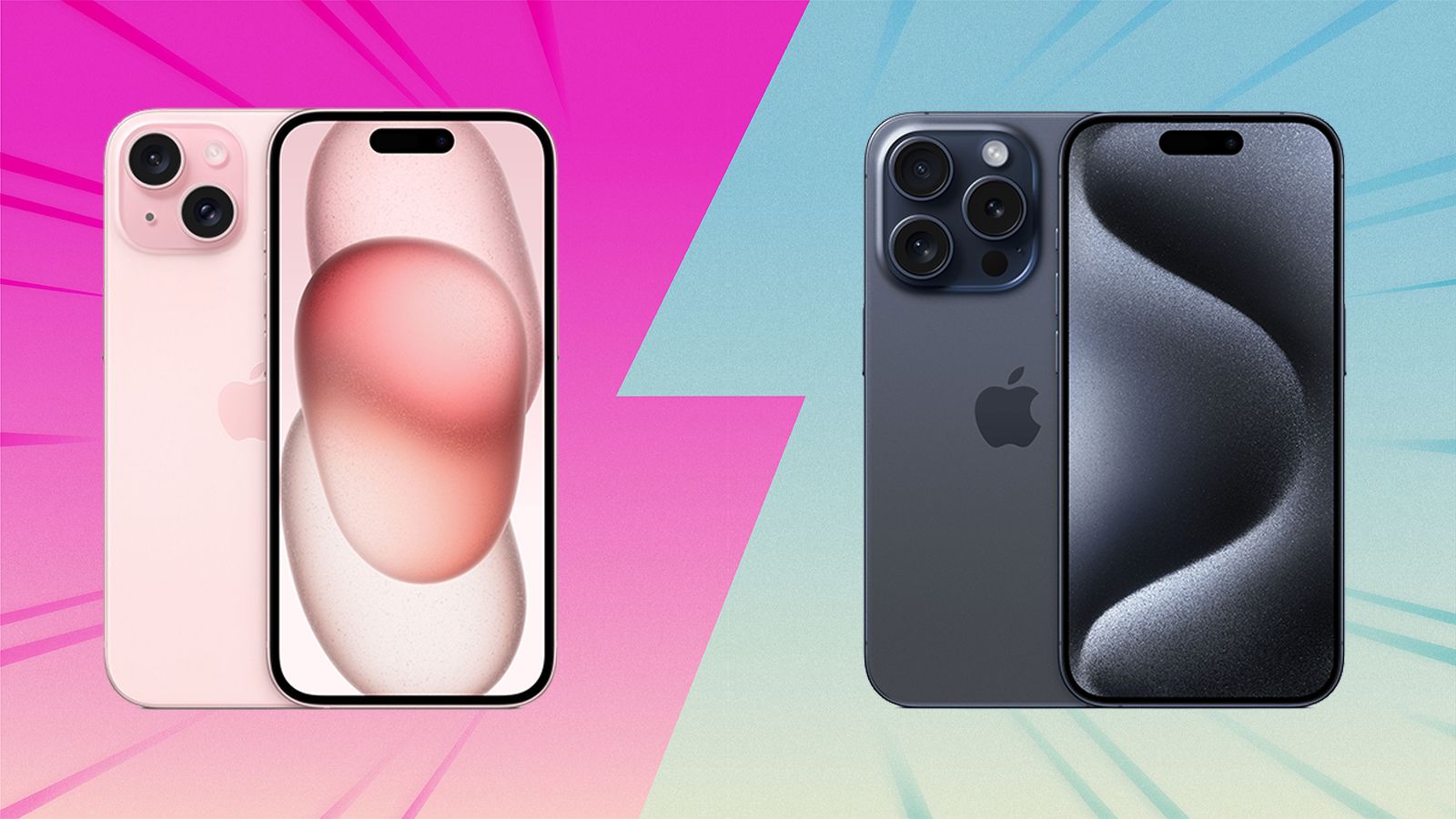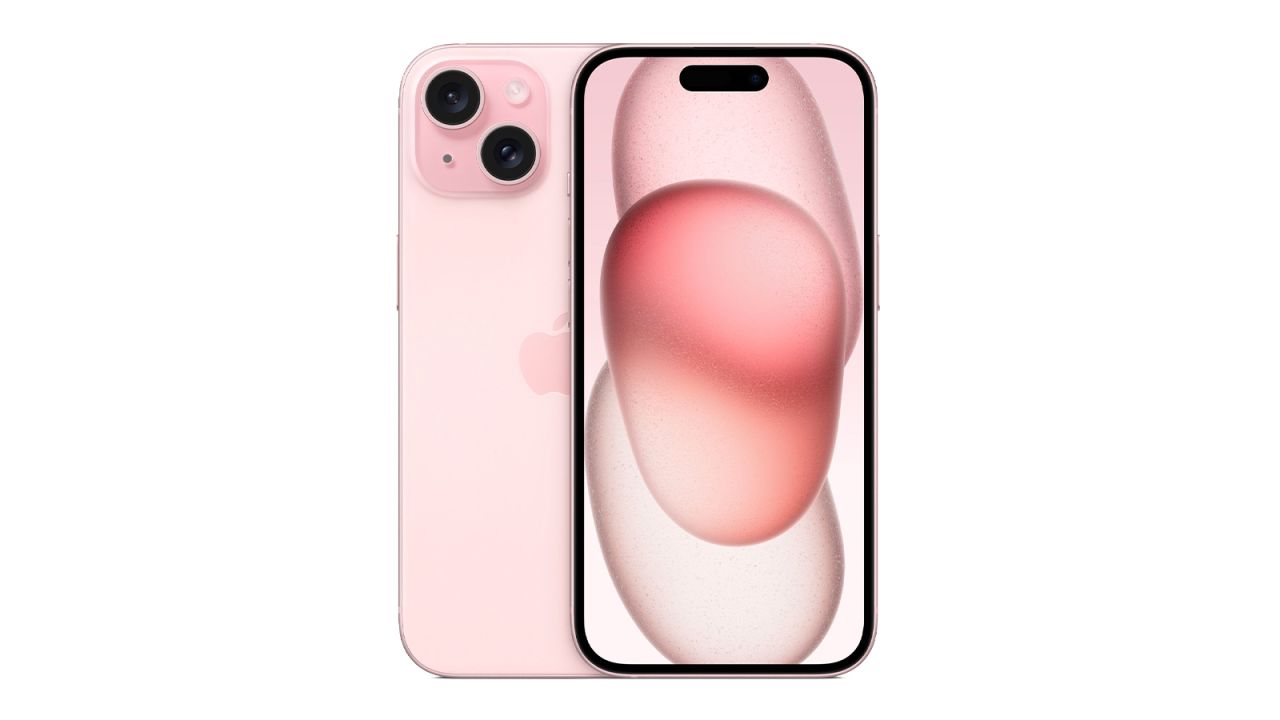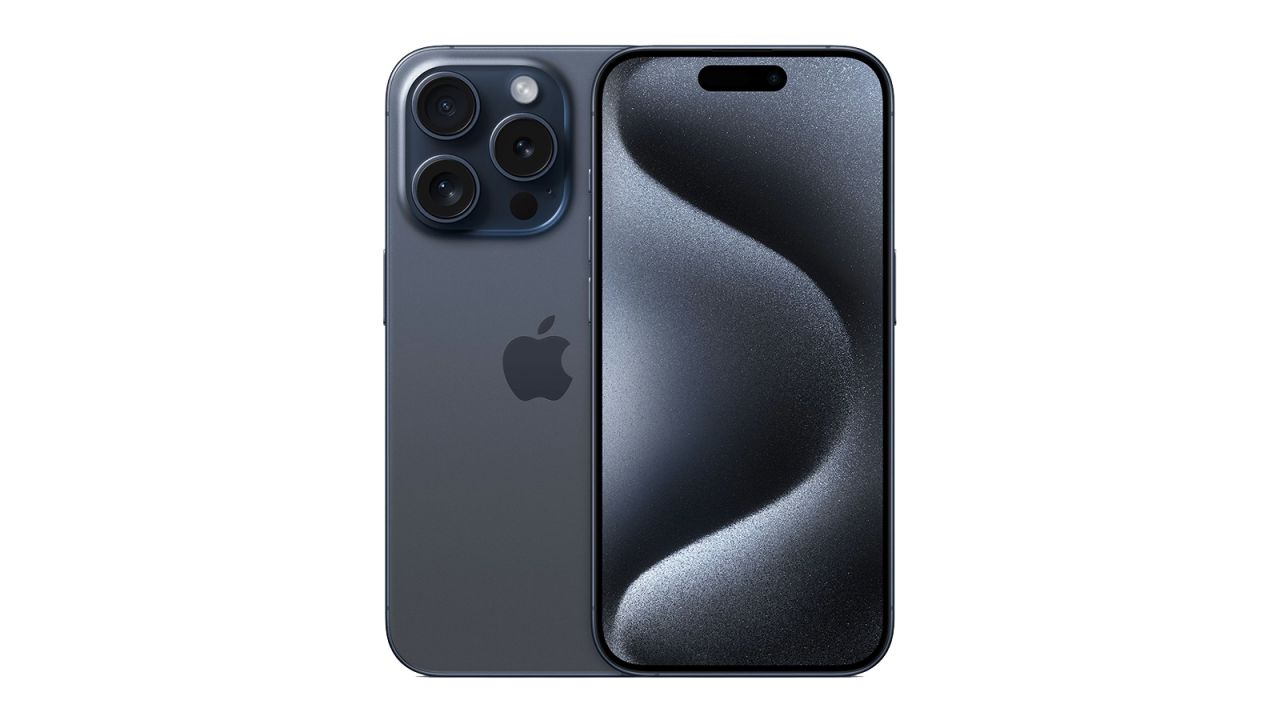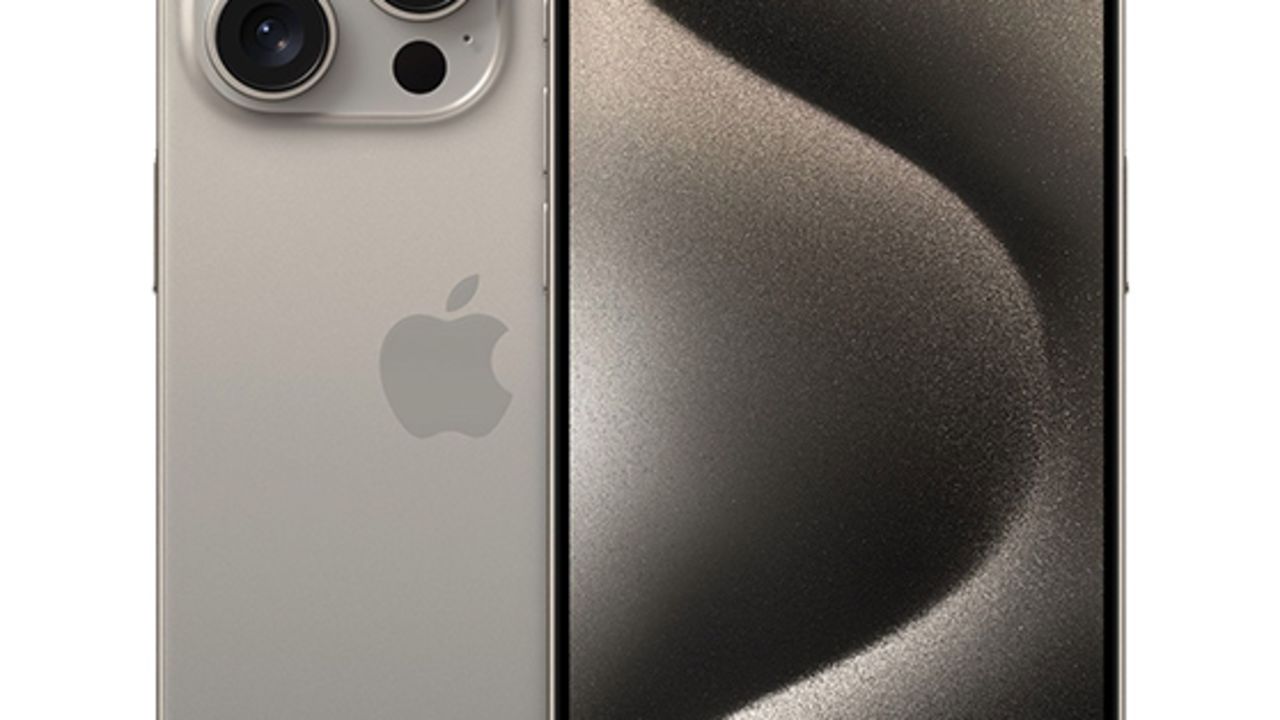The iPhone 15 lineup follows the same pattern we’ve seen Apple use for the last few years, consisting of four different models, each with its own pros and cons. It’s good to have options, but that also means you’re forced to make a decision about which iPhone 15 is right for you.
At first glance, it may appear as if color options and cameras are the only differences between the iPhone 15 and iPhone 15 Pro. But if you look closer, you’ll discover there are a few key features that could easily tilt the scale in favor of one phone or the other.
I’m here to break down the similarities and differences, as well as throw in my hands-on experience with both phones, in an effort to help you decide which phone is right for you.
The iPhone 15 is the best new iPhone for most people, with useful new camera tricks, the excellent Dynamic Island and all of the perks of USB-C.
Pros get the Action Button, titanium, a better long-distance zoom and all the other iPhone 15 perks, such as USB-C.
Quick comparison
| Operating system | iOS 17 |
iOS 17 |
|---|---|---|
| Display | 6.1-inch Super Retina XDR |
6.1-inch Super Retina XDR with ProMotion, always-on display |
| Processor | A16 |
A17 Pro |
| Storage | 128GB, 256GB, 512GB |
128GB, 256GB, 512GB, 1TB |
| Memory | 6GB |
8GB |
| Rear cameras | 48-megapixel main, 12-megapixel ultrawide |
48-megapixel main, 12-megapixel ultrawide, 12-megapixel telephoto |
| Front camera | 12-megapixel TrueDepth camera |
12-megapixel TrueDepth camera |
| Colors | Pink, yellow, green, blue, black |
Natural titanium, blue titanium, white titanium, black titanium |
| Size and weight | 5.81 x 2.82 x 0.31 inches, 6.02 ounces |
5.77 x 2.78 x 0.32 inches, 6.60 ounces |
| Price | $799 | $999 |
Out with the old, in with the new
The iPhone 15 is made of aluminum, which is the same material Apple has used in non-Pro iPhone models for the last few years. Only this year, Apple has infused the color of the phone into the glass back. The result is a colorful housing, with a matte finish and look to it that’s sure to be a major selling point to many. Granted, most of us cover up the colorful backs with cases. The iPhone 15 is available in pink, yellow, green, blue and black color options.

The iPhone 15 Pro lacks the same colorful options as the standard 15, but that’s nothing new when you look at past iPhone models. What is new, though, is the fact that the 15 Pro is made of titanium — a first for any iPhone — replacing the stainless steel on previous Pro models. The back of the phone has a textured matte glass back that doesn’t look like glass at all. Color options for the 15 Pro include Natural Titanium, Blue Titanium, White Titanium and Black Titanium.
On the right edge of the iPhone 15 is the sleep/wake button, with the volume keys and a mute switch on the left side. On the bottom, you’ll find a USB-C port — another first for the iPhone — for charging and syncing data to the iPhone. The iPhone 15 Pro is similar, but instead of two cameras on the back, you’ll find three. And instead of a mute switch above the volume keys, there’s a new Action Button you long-press to carry out a task like mute your phone, launch the camera app or run a shortcut.

While the mute switch has been a staple of the iPhone experience, the Action Button has turned out to be incredibly useful, particularly when programmed to launch a shortcut. Right now, when I long-press the Action Button, it opens a shortcut that gives me the option to do routine things like silence the phone or enable/disable Do Not Disturb. But I’ve also added options to warm up my car, toggle the status of my VPN connection, control lights in my home or start playing music on a HomePod — all without launching an app.
Finally, despite both phones having the same display size, there is a slight difference in their overall sizes — the iPhone 15 Pro is marginally smaller and minimally heavier than the iPhone 15.
TL;DR: If you’re trying to decide which phone to go with based on design, I have to give the slight edge to the 15 Pro because of the Action Button. That said, there’s a case to be made that the iPhone 15’s mute switch is preferred due to familiarity, not to mention the more colorful options sure are attractive.
A small but important difference in displays
Both phones feature a 6.1-inch display with a Dynamic Island cutout to hide the front-facing TrueDepth camera. This is the first time the Dynamic Island has been available on a non-Pro iPhone after the feature made its debut with the iPhone 14 Pro and Pro Max. The Dynamic Island is used to display alerts and important information, and it provides quick access to various functions, such as playback controls when you’re listening to music. Apps that have added support for Live Activities for glanceable information, such as sports scores or the status of your Uber, will also show up in the Dynamic Island.
Both displays have the same resolution, color saturation and peak brightness (2,000 nits), which makes them easier than ever to see outdoors.
What differentiates the displays is the fact that the 15 Pro’s screen has an adaptive refresh rate of up to 120Hz, while the iPhone 15 is locked to 60Hz. Additionally, the iPhone 15 Pro has a low-power always-on display feature that keeps the screen on when the phone is sitting idle, making it easy to see the time and any pending alerts at all times.
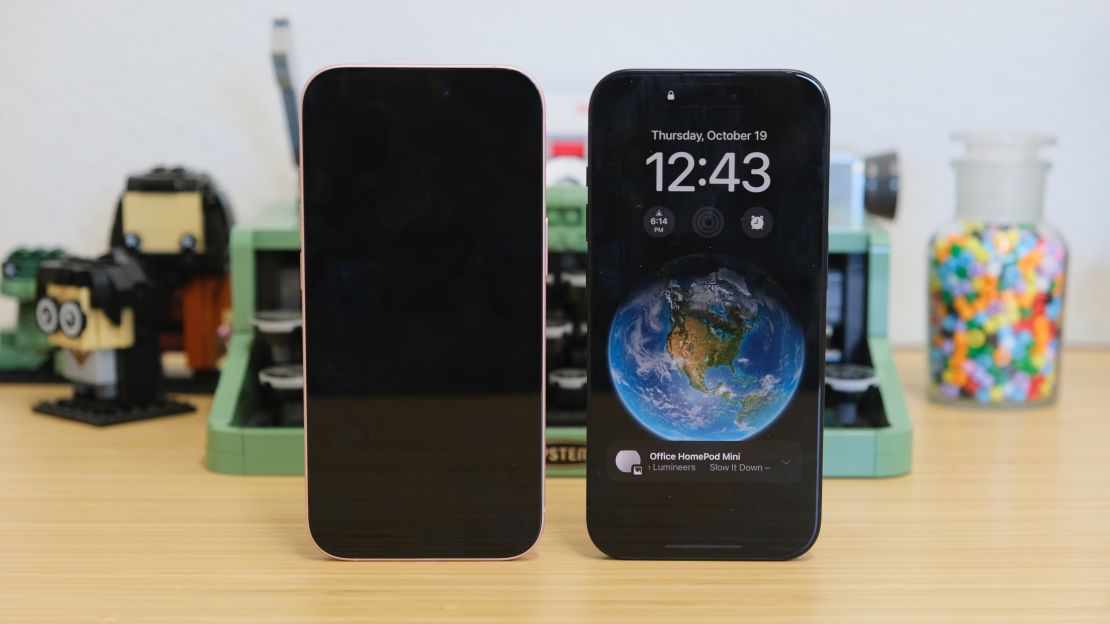
The adaptive refresh rate of the Pro model means that the phone can speed up the display when you’re doing things like scrolling a long webpage or playing a game, providing a smoother overall experience. In practice, however, I have a hard time seeing a meaningful difference when using the phones side by side. Scrolling is smoother on the 15 Pro, sure, but outside of that, it’s hard to quantify.
That said, the iPhone 15 Pro’s always-on display is a feature I use and rely on every day to keep tabs on the current time, incoming notifications, lock-screen widgets and even live activities without having to constantly open my phone.
Admittedly, it takes a few days to get used to seeing your iPhone’s screen lit up, even if it’s very dim. For those first few days, I found myself reaching over and trying to put the phone to sleep, only to remind myself the screen’s supposed to be lit up.
An always-on display adds an extra layer of interaction between you and your phone, even if that means you don’t have to touch the phone at all to use it. For some, that’s surely an attractive feature to have; for others, it’s a distraction. (For what it’s worth, you can disable the 15 Pro’s always-on display in the settings app.)
TL;DR: The iPhone 15 Pro’s always-on display and faster refresh rate give it an edge over the standard iPhone 15, but the two displays are nearly identical otherwise.
Performance and battery life
Powering the iPhone 15 is Apple’s A16 Bionic processor, which is the same one that was used in last year’s iPhone 14 Pro lineup. So, it’s older tech, but it’s still very fast and able to handle iOS 17 and all of its features. Apple doesn’t officially list the amount of memory in any iPhone, but according to Geekbench 6, the iPhone 15 has 6GB of memory. Storage options include 128GB, 256GB or 512GB, priced at $799, $899 and $1,099, respectively.
The iPhone 15 Pro uses Apple’s latest chip, the A17 Pro, which has one more GPU core compared to the A16 Bionic (important for gaming!) and is faster overall. The 15 Pro comes with 8GB of memory and storage options of 128GB, 256GB, 512GB or 1TB, priced at $999, $1,099, $1,299 and $1,499, respectively.
If you were to objectively compare the two phones’ performance using benchmarks, the iPhone 15 Pro is the clear winner. When running Geekbench 6’s CPU test, the 15 Pro has an average single-core score of 2,915 and a multi-core score of 7,213. Running the same test on the iPhone 15 results in an average single-core score of 2,595 and a multi-core score of 6,510.

Those scores equate to the iPhone 15 Pro offering better single-core performance you’re mostly likely to use for routine tasks that don’t take a ton of power, such as scrolling social media. The multi-core improvement in the A17 Pro is going to be most apparent when gaming or doing resource-intensive tasks like editing photos or video. It’s also worth noting that the iPhone 15 Pro’s better processor gives it exclusive access to select console-quality games that are launching soon, including Resident Evil Village, Death Stranding and Assassin’s Creed Mirage.
But when using the phones as I typically do — to check email, read news, mindlessly scroll social media, chat in the Messages app and take a few random photos — I haven’t noticed a meaningful difference in performance between the two phones. If you forced me to nitpick, I’d have to settle on the fact that apps appear to launch slightly faster, photo edits are applied quicker and I sometimes spend a second or two less waiting for the 15 Pro to load games.
Apple’s official battery life estimates put the iPhone 15 lasting through 20 hours of video playback, while the iPhone 15 Pro can power through 23 hours of video playback.
My experience when using either phone has been similar to those numbers, with the iPhone 15 Pro routinely having a few percent more battery left at the end of the day compared to the iPhone 15.
TL;DR: Both phones offer similar performance and battery life. If you frequently game or find yourself wishing your current phone had more battery life, the 15 Pro is the way to go. Otherwise, the 15’s performance is just fine.
The cameras are closer than ever
The iPhone 15 has two rear-facing cameras, with zoom options ranging from 0.5x ultrawide, standard 1x and 2x zoom — the latter of which is normally reserved for iPhones with three rear cameras. Apple’s using some software trickery to take 2x photos using the main camera’s 48-megapixel sensor, only zoomed in. The iPhone 15 has zoom options ranging from 0.5x up to 10x.
The iPhone 15 Pro has three rear-facing cameras, including a 48-megapixel main camera, a 12-megapixel ultrawide camera and a 12-megapixel telephoto camera. Using similar software tricks to take advantage of the bigger main camera’s sensor, the 15 Pro gives you 0.5x, 1x, 2x and 3x zoom options by default, with a max zoom level of 15x, up from the 15’s 10x. If you want something with more zoom, the iPhone 15 Pro Max has a 5x optical zoom and up to 25x digital zoom.
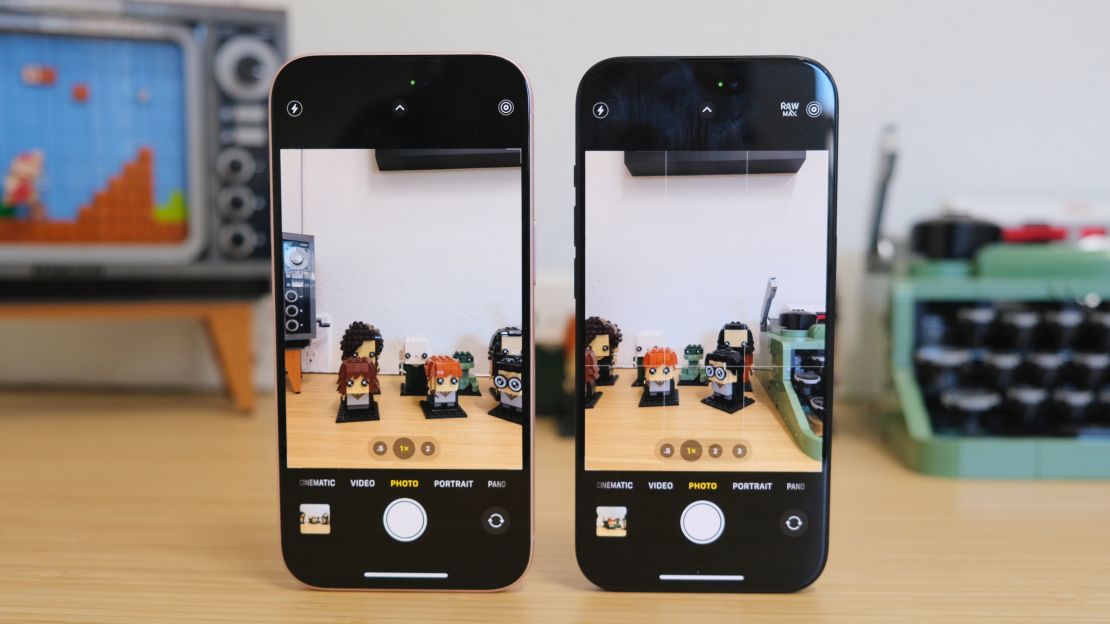
In addition to more digital and optical zoom options, you’re also gaining access to improved optical image stabilization, the ability to take night mode portraits, a macro photography mode and support for Apple’s ProRAW image type for more editing options on the 15 Pro.
Both phones have similar video recording features, but the iPhone 15 Pro goes beyond the 15’s capabilities with support for ProRes video and more advanced video features like Log video recording and a macro video mode. Macro video mode allows you to get really close to an object like a flower or an insect while keeping it in focus.
The front-facing cameras are identical in capabilities, save for the added support for ProRes video recording on the 15 Pro.
These advanced video features like ProRes and Log video recording provide more tools and options for professional videographers to fine-tune and adjust colors in video recorded in those formats, but for the vast majority of iPhone users will mean nothing.
The camera system on the iPhone 15 Pro is more capable and versatile than the standard 15, but neither phone takes bad photos. In fact, the performance of both camera systems has never been as similar as it is now. You’re getting multiple optical zoom levels and high-resolution shots out of both phones.
One feature I still can’t believe isn’t limited to the iPhone 15 Pro is the ability to take a normal picture and convert it to a portrait photograph after the fact using Focus and Depth Control. In order for the feature to work, you need to either tap on the screen to set a focus point, or the iPhone has to detect a person or animal in the photo. When either of those conditions is met, the iPhone will also capture depth information along with the photo.
Then, when you edit the photo, you can turn it into a portrait photo or change the focal point to an item in the foreground or background.
Prior to the iPhone 15 launch, I rarely considered the standard iPhone models due to camera differences. However, with the 15 and 15 Pro, I’d be just as happy with either phone based off of the camera setup. It’s not until you start comparing either phone to the iPhone 15 Pro Max that you see a bigger difference.
TL;DR: The iPhone 15 Pro’s camera is the best camera you can get on an iPhone right now, thanks to improved zoom and better overall clarity. That said, the iPhone 15’s camera is no slouch — if you mainly care about taking and sharing photos on social media, you’ll be happy with its results.
Bottom line
Apple made it really hard this year for iPhone users to decide between the iPhone 15 and 15 Pro. There’s a convincing argument to be made that the iPhone 15 is the most “pro” entry-level iPhone yet. And for that reason, it’s a fine choice for a lot of people, especially because it saves you a couple hundred dollars.
However, if you like to have the latest and greatest iPhone, then the iPhone 15 Pro’s always-on display, new Action Button, titanium housing, beefier processor and extra camera setup is well worth the $999 investment.
